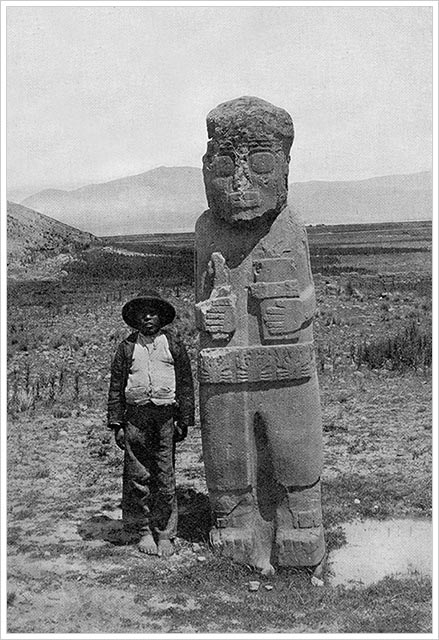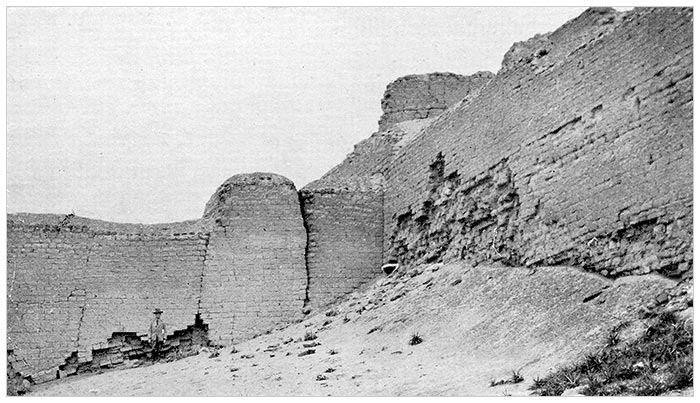Inca Treasures, Part 2
Tia Huanaca is 12,500 ft. above sea-level. At Huaqui I met my friend Bruce, formerly third officer on a P. S. N. C. liner. He had surrendered that position to become mate of the Puno, one of the steamers that ply on the sacred lake. This boat was built in sections at Glasgow, and fixed up at Titicaca.
Bruce was considering an offer, which would place him in charge of a tug on the San Domingo River, used for dredging gold for the San Domingo Mining Co. I intend to refer to these famous mines when I deal with mining in Chapter XVII. The story of how Major Gibson, of the English Guards, discovered them is worth telling.
It was on this particular occasion, that I also ran up against my old friend Lord Headley. I accosted him with, “Hulloa! my lord, and what are you doing here? ” He replied, “Hulloa! my boy, and what are you doing here? Prospecting and looking for mines on Mariano Penny’s account, I suppose?”
“Not this time,” I rejoined. “Penny has given me leave to look up a tin proposition for a Lima friend.” Lord Headley then explained that he had come to Titicaca to get his skin cured of an affection he had contracted on an expedition undertaken on behalf of the Peruvian Rubber Co. It was a kind of rash on the back of his hands. When Headley consulted the family doctor on the subject, that worthy said, “It is no use your coming to me. We English doctors can do you no good. You must go back to the country whence you came. Go you to the curative springs Prescott speaks of, near Lake Titicaca.”
Headley told me he had been there a fortnight, and was now intending to return home. I advised him to defer his departure a couple of months, and give the Jura baths a turn. “Hire one of the village huts,” I said, “pot ducks, enjoy the enchanting views of the sacred lake and the majestic snow-capped Yllimani and Ylliampo mountains, and Jura will do the rest.” Doctor Parvin, the justly celebrated practitioner of Lima, says no skin disease can resist the Jura waters, taken in combination with the exhilarating atmosphere of the Andes. (This gentleman also attributes the immunity from contagious diseases, enjoyed by people living in these high altitudes, to the fact that no fleas, sandflies, or insects of any description are to be found above 7500 ft. My own personal opinion is, that all insects perish at about 6000 ft. Bugs, of course, excepted—those enterprising cavaliers seem proof against both cold and heat!)
Lord Headley took my advice. Two years later I came across him at the Great Western Hotel at Southampton. He was just off to Florida, hoping to enjoy some tarpon fishing, which was his great hobby. That he might be free from molestation, he had bought an island off the coast. He thanked me for my prescription, and said it had put him quite right.
Well, I reached Lima in due course and showed my samples to my friend. He had them tested by the Government assayer. The results were as follows: Samples taken at the 9000 ft. level, showed 5 per cent. of tin, those taken at 12,000 ft., 15 per cent. The percentage at 15,000 ft. was 25 per cent.; and at 16,000 ft., 60 per cent. This report was shown to J. B. Minchin, than whom few people in the wide world know more about tin. He was of opinion that my find was a rich one. The great trouble with tin is that, in the majority of instances, it appears only on the surface, or a few feet below. Now my samples gave good results from 9000 ft. right up to 16,000 ft.—proof positive that the lode was deep, and the proposition good enough for any company.
My friend experienced no difficulty in disposing of his rights. Jackson gave him £2000 for them, on behalf of a syndicate he represented. I had the satisfaction of receiving £500, plus £300, which represented my commission and expenses.
I sold my mules to the manager of a gold mining company for work in the mountains near La Paz. He paid me, with very great pleasure, £220 for them. So I made a profit over the animals of £60, after having had the use of them for six months. Altogether I did fairly well out of the transaction. One of General Pando’s aides-de-camp took charge of my chestnut hurdle-racer for me, until I required him again, often riding him at reviews.
My jumping-off points for Bolivian expeditions undertaken on behalf of M. M. Penny and his friends, were La Paz, Oruro, or Cochabamba. When I went into Peru I invariably started from Puno or Arequipa.
I kept a favourite mule, called El Pasha, at one or other of these places. It took its name from a celebrated horse belonging to Emilio Casal, owner of the famous sprinter Huron. This animal was never seen to best advantage in a race, unless El Pasha accompanied him to the post. The two invariably started off well together. El Pasha couldn’t live with his companion more than three furlongs. When he died out, Huron used to sail away on his own, no matter how heavily burdened in handicaps, and win weight for age races, hard held, by one or two lengths. Bismarck was the only horse with any pretensions of tackling him in the last-named sort of race. I only saw Huron run twice without El Pasha, and he seemed to go with less dash than usual. One race he won by a neck; the other he lost by a head. As a consequence, Don Emilio decreed that El Pasha should, ever after, accompany Huron to the post, and not run in inferior class races. This was a bit hard on him, for he was a champion in minor events.


